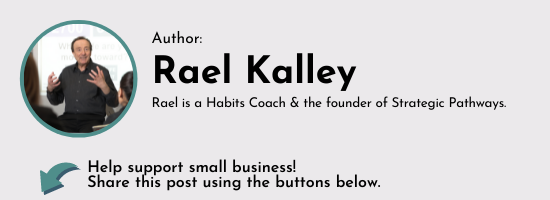
The first time I heard the expression “You must learn to become comfortable with being uncomfortable,” I remember writing it off as being corny and relegating it to some discarded storage closet buried deep in the darkest recesses of my brain.
Yet as the years passed and my client base grew allowing me the privilege of working with hundreds of fascinating people, that statement crept back into my conscious awareness and has come to serve as a powerful truth.
Most of my clients are small business owners whose livelihoods depend on their ability to sell their services.
To achieve success as a self-employed service provider, it is necessary to come to the realization, as soon as possible, that while you may view your job as being a provider of your service, and that your success will depend on how well you deliver value to your clients, your first, and most important job is that of salesperson. This requires –actually demands – that every moment of your working day that is not spent delivering a service, MUST be spent seeking out future prospects and convincing them to become clients.
Comfortable Being Uncomfortable
This is where learning to be comfortable with being uncomfortable plays a determining role in whether you will be successful in growing your business or whether each new year will simply echo the previous one and become a forerunner for the year to follow.
Most of my new clients tell me they work extremely hard in marketing their businesses. However when I ask them what specifically they spend their time doing, most will tell me how much time and effort is spent on their website development, social media marketing, developing sales materials, sending out soliciting emails and texts and other similar activities.
And – much to my surprise – when I point out to them that this is extremely poor use of their time, they become angry and defensive.
I am not for a moment suggesting they abandon the above-mentioned marketing strategies, I am simply saying that these are activities that should be done outside of business hours. In fact the only activities they must be doing during those hours are to make sales calls, interact one-on-one with as many people as possible, present their services to potential clients and deliver services to their existing ones.
Many seem quite disturbed when I suggest that 11:00 PM or 5:00 AM are excellent times for working on websites, sending out and marketing emails doing all that other stuff that does not lead directly to closing the next sale.
I have two hypotheses as to why so many self-employed service providers, particularly those new to their businesses, devote so much time during business hours to marketing their businesses rather than selling their services.
The first reason: many people going into business for themselves do so with the mistaken conviction that being self-employed is simply a different form of having a job which means starting work at 8 AM and going home at 4 PM.
I have yet to meet a single person who has built a successful business working only within those hours. Every successful self-employed person I know relegates every non-sales and every non-service delivery activity to nonbusiness hours which means many evenings, weekends and early mornings is spent “at work.”
Being a self-employed service provider is not a job, it is a mission that almost always requires sacrifice and pain for the undertaking to be fulfilled.
It’s a Mission
The second reason: our number one desire is to be accepted and our number one fear is the fear of rejection. To achieve success as a self-employed deliverer of value almost always requires doing things that raise the probability of us being rejected which means disciplining ourselves to repeatedly do things like make sales calls. It requires us to step far outside of our comfort zones.
Which helps us understand why it is far more comfortable to spend our days improving our websites versus placing ourselves directly in rejections line of fire.
I have many clients who, week after week, come to my office with well thought out justifications for why one more week has passed without them making any sales calls.
Change always brings the risk of discomfort, yet it is only by adopting change that we can discover whether it is right for us.
Finally, when every excuse and reason has been exhausted, and they have nothing left to fight me with, they steel themselves to make those calls and, to their surprise and delight, find themselves busy meeting new potential and actual clients. Only then do they begin to experience the power of becoming comfortable with being uncomfortable.
The greater the level of discomfort, the greater the effort required to become comfortable. I have lost count of the clients I have worked with who developed powerful new habits which have contributed mightily to their success and which can be only attributed to their willingness to learn how to bring comfort to their own discomfort.
The fastest way to learn how to be comfortable with being uncomfortable is to immerse ourselves in discomfort – do the very things we don’t want to do – and stay there until the magic happens.
I promise it won’t take anywhere near as long as you may think.
Till we read again.

